Growing tomatoes in a raised bed – practical tips with instructions for hobby gardeners
Growing tomatoes in the raised bed is one of the simplest and most practical approaches to gardening. You don't have to be a builder or have to use tools to set up a DIY project. Reliable providers can also help you provide affordable components, simple setup instructions, and expertise. However, if you want to know how to build a raised bed for tomatoes yourself, you can simply follow these basic tips and you will be able to enjoy an abundance of your own, fresh and juicy organic vegetables in summer.
Advantages of tomatoes in raised beds

While gardening in raised beds differs somewhat from the usual methods, you can get a rich harvest by growing your tomato plants in raised beds. Simply give your crops what they need. The main advantage is that the beds are set higher, making water for vegetables easier to drain. In a raised bed you can also let your plants grow closer together and thus produce more tomatoes in small rooms. However, higher beds mean that you don't have to bend down so much to work the soil.

Adding compost, topsoil and fertilizer to the garden bed enables a nutritious home for your tomatoes. This saves resources and concentrates them where they can best be used. They also walk on paths between the beds and prevent the garden soil from compacting. If a fungus or other disease overtakes your tomatoes, you can replace the soil the following year. This is a step that would be impractical and costly in a normal garden. For example, snails find it more difficult to infect tomato plants that grow in raised beds. This makes it easier to maintain and maintain these areas and such vegetable gardens.
Before you start
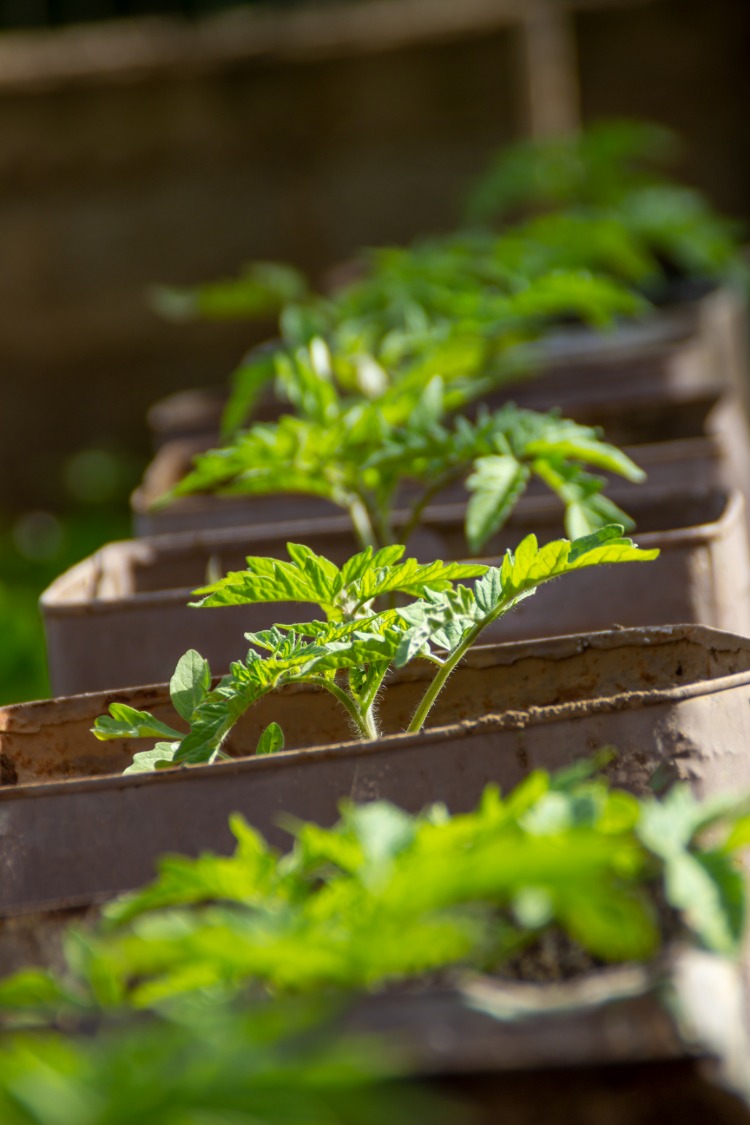
The best locations for tomatoes in raised beds are flat, well drained and close to a water source. It is therefore best to choose a place that is exposed to direct sunlight for at least eight hours a day. Create an outline of your raised bed with string, garden hose, or even flour, and then measure the area. First work the floor. Tomatoes need a lot of water and the plant roots in a raised bed must be able to penetrate the soil. Most such vegetables such as tomatoes and cucumbers in the raised bed grow beautifully in about 30 cm deep soil.
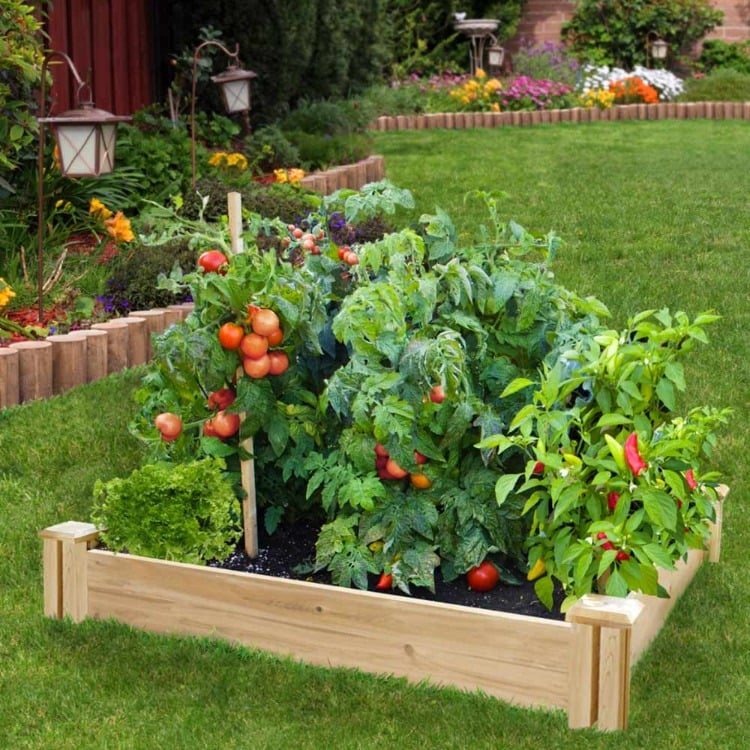
If you are realizing the project in the garden, you should also prepare the construction site by first removing the lawn. For example, use a tiller, spade, or pitchfork to twist and loosen the ground at least 30 cm. Choose a durable border material so you can grow tomatoes in a raised bed without a roof year after year. Choose from all types of materials for the production of raised beds, such as plastic, recycled composite, galvanized steel or wood. Also make sure that you can reach the center of the bed from both sides. Usually, this should not be wider than 1.2o meters. In this way, you can easily cultivate and cultivate the plants. A common mistake is to build raised beds too close together.
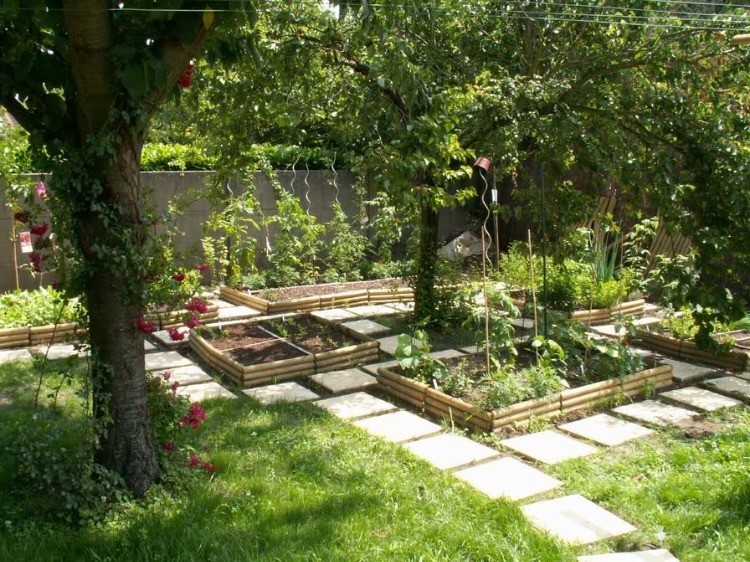
If you are building more than one vegetable patch, set it so that your wheelbarrow can get through (usually about 80 centimeters), but first measure your wheelbarrow to be sure. After installing the border material, line the bottom of the raised bed with chicken wire to keep ground squirrels, moles, and other pests away. To determine the volume of soil needed to check your raised bed, measure its length, width and height in meters and multiply these numbers together. The result is the number of cubic meters required. Combine topsoil and organic matter (shredded leaves, compost, well-rotted manure, seaweed) in the raised bed. Use a spade to mix the components well. Finally rake the surface smooth.
When can you plant tomatoes in a raised bed?
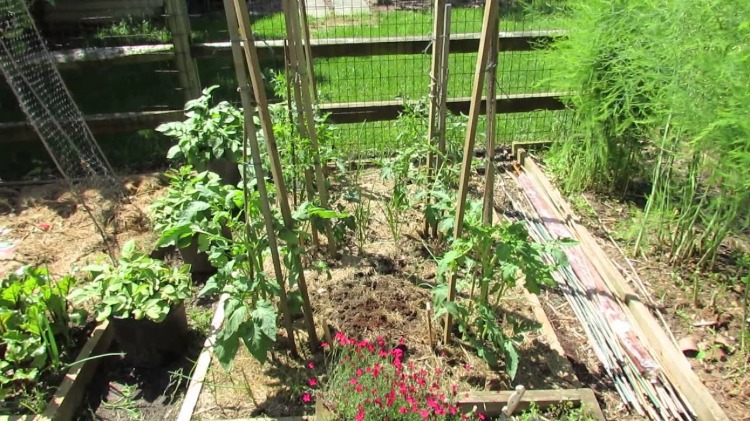
Where you live is the most important factor when deciding what time of year you should plant tomatoes in a raised bed with or without a roof. In general, you can plant them as soon as the risk of frost is over. Many people wait a little longer and frankly it won't make much difference in the time you get your harvest. Regardless of whether you are planting as soon as possible or waiting an extra week or two. Your local gardening shop can help you determine the right time for planting for your location. If an unusual frost occurs late in the season, just cover your plants early in the evening before the expected event. Instead of a roof, you can also use plastic bottles, leftover bubble wrap made of packaging material or even a tent roof.
Create a raised bed for tomatoes with concrete tiles

With the following guide, you can create a small vegetable garden in the back yard for less than an hour. For this you need simple cardboard or cardboard, 8 concrete tiles, topsoil, tomato seeds or tomato plants and water. You may also need a shovel. You can find these in the hardware store. First select an area and measure the room. Make sure that the location is exposed to direct sunlight for 6 to 8 hours a day. If you use soil from the ground, you need to add compost and suitable fertilizer. With a tomato plant already grown there is a chance that it will grow faster and higher. This guide is about seeds from large red cherry tomatoes.
manual

- First lay out the box. Each variety works for this project. Unfold the box and place it in the selected area. The box will be the basis of your vegetable garden. This prevents weeds and grass from growing under the tomatoes and feeds the plants.
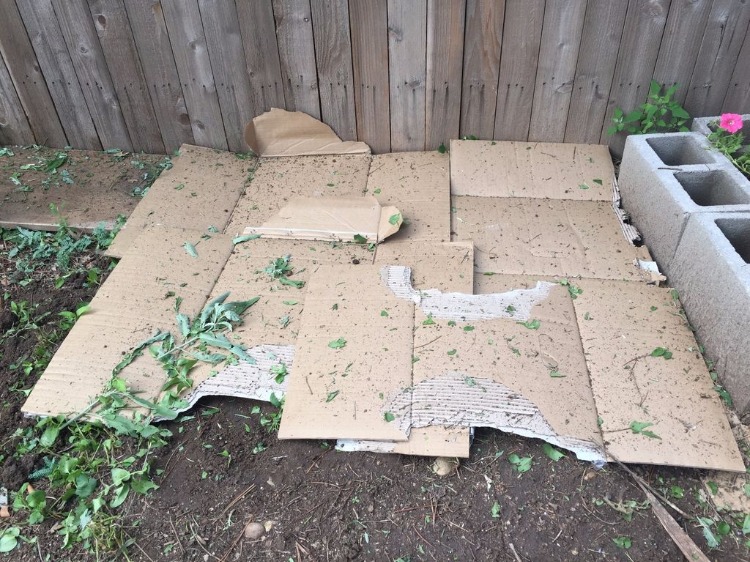
- First arrange the concrete tiles with 2 on each side. Make sure the blocks are on the edges of the box to hold them in place.
- Pour the soil into the shaped basin on the cardboard. As mentioned above, this can either come from somewhere in the yard or be bought. A bag of topsoil is sufficient for this size of raised bed. Once the floor has filled the area inside the bricks, smooth it out to evenly distribute the base.
- If you plant the seeds at a distance of about 13 cm, the tomatoes will grow tall and not on top of each other. The main goal is that many healthy plants grow and they cannot grow into unhealthy tomatoes if they are too close together.

- Then cover the seeds with soil. Planting the seeds 3 cm deep into the soil helps with growth and holds the water to feed the roots.
- Water the soil until the soil is evenly moist. Watering the seeds after planting will help them decompose and grow in the moist soil. Spray the floor carefully with a hose. However, do NOT pour in additional water and do not apply great pressure.
Irrigation and care

Check daily whether the soil remains moist. You have to hold this until all the seedlings appear. This allows the plants to grow tall and strong to make large tomatoes. Note: Test the moisture in the soil by pushing a finger in it to determine how wet the soil is. It is best to water the tomatoes in the raised bed in the evening. Water on the tomato leaves in the hot sun can damage the plant by burning or scaring it. Once the plants are at least 13 cm tall, it can be helpful to lay out straw to keep the soil moist without having to water as much.
Tomatoes and other similar vegetables therefore need a lot of water. If, for example, cucumbers and tomatoes are grown together in the raised bed, you can quickly determine that they will need a little more of them. A long, slow trickle is perfect so that it can sink into the deep root system of your plants. If you haven't set this up, try watering it several times within a few hours. This also saturates deep in the ground. It is also best to water deeper near the ground, especially if you do this in the evening so the leaves don't stay damp all night. Otherwise this would be a possible cause of illness.

The straw helps maintain the essential moisture for the root system, maintain the warmth of the soil, and reduce the occurrence of weeds. Make sure to leave a few inches around the base of each plant so that the water can penetrate well and give the plant room to breathe. As mentioned above, you shouldn't promote disease in your plants. Raised beds are slightly less prone to problems than normal gardens, but the following tips will help you avoid potential complications.
Tips and tricks for planting tomatoes in the raised bed

An easy way to avoid potential pests in your raised bed is to change the beds with a different, unrelated vegetable every year. In this way, leftover pests from the previous year will not be in wait. Peppers and tomatoes in the raised bed are nightshades, as are potatoes and eggplants. For this reason, we suggest that you change them with cruciferous vegetables, lettuce, vegetables, peas, carrots, beets or beans. Although caterpillars in a raised bed are less of a problem than planting in the ground, these little monsters can still get in there. This is especially true if you add a normal garden floor or your bed is older. Therefore, placing the box, as mentioned in the instructions, can protect your young tomato plants.

For most other pests, your best defense is to keep a close eye. If you notice withering or discoloration, check immediately whether the infestation is present. Many home remedies are easy to make and suitable organic pesticides are now easy to find for vegetable gardens. As with insect handling, your raised bed requires your vigilance. Remove ripe fruit immediately as they attract not only insects but also animals. If you have problems with end-of-flower rot, add calcium to the bed. Fungal diseases and epidemics can often be avoided by not pushing yourself and supporting tomatoes properly.
The post growing tomatoes in a raised bed – practical tips with instructions for hobby gardeners appeared first on Deavita.com | Living ideas, design, hairstyles, make-up, lifestyle, health and beauty tips.






















